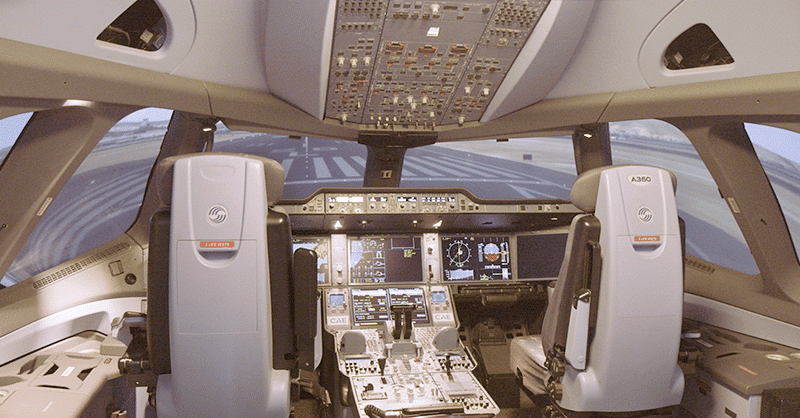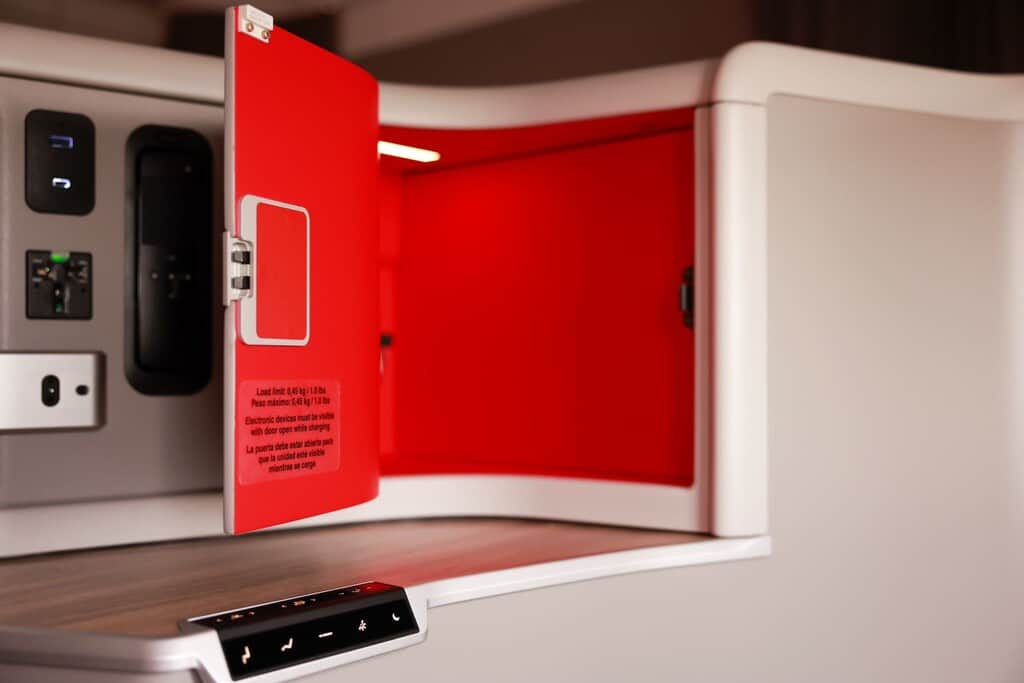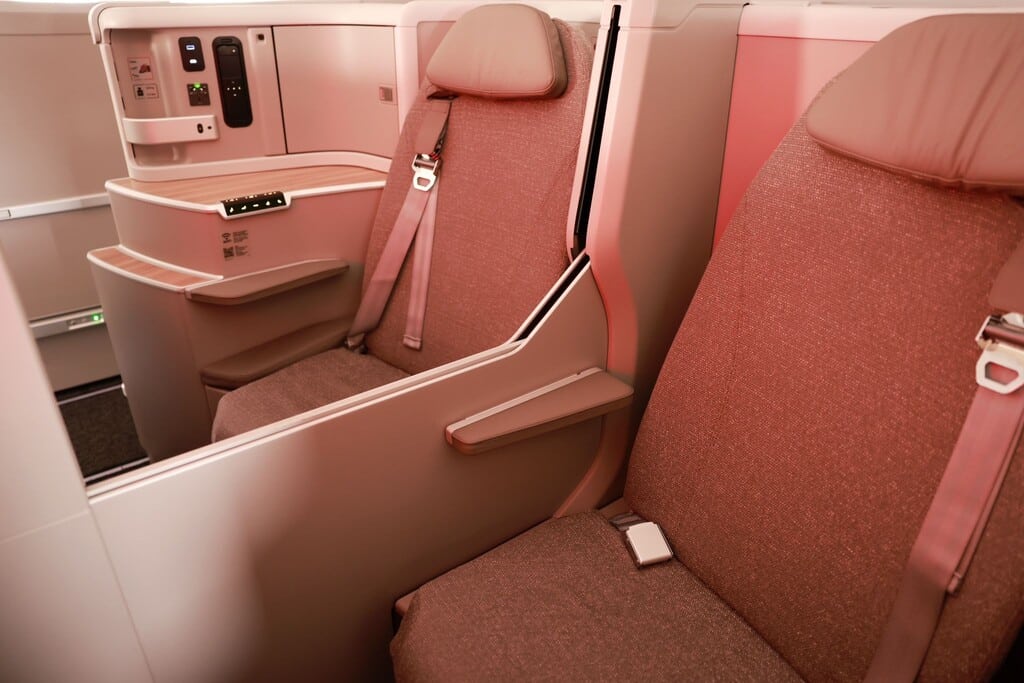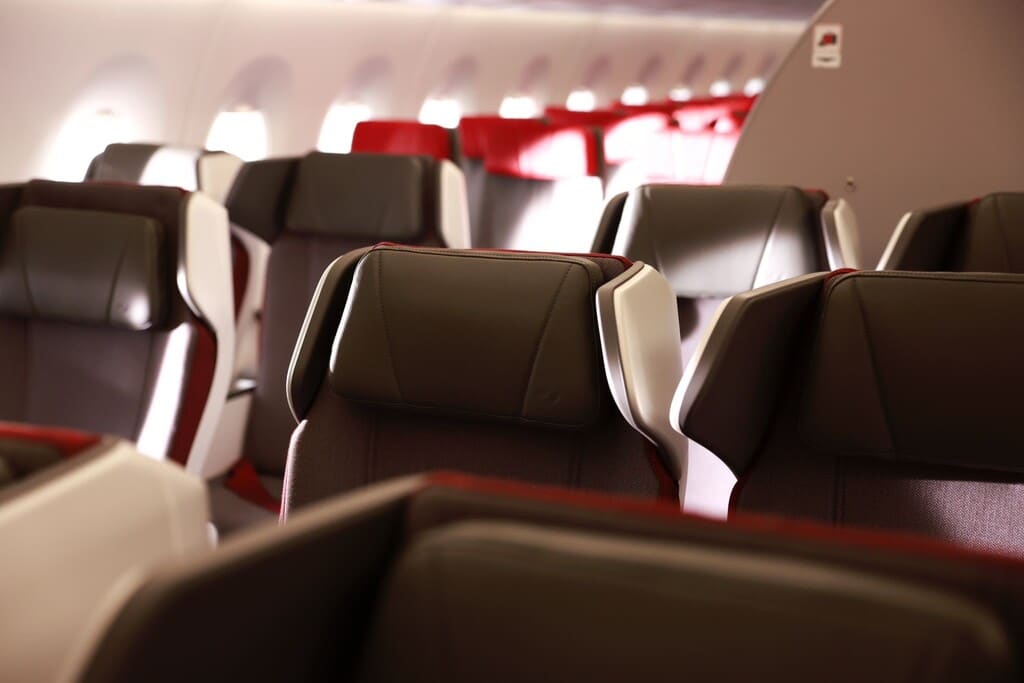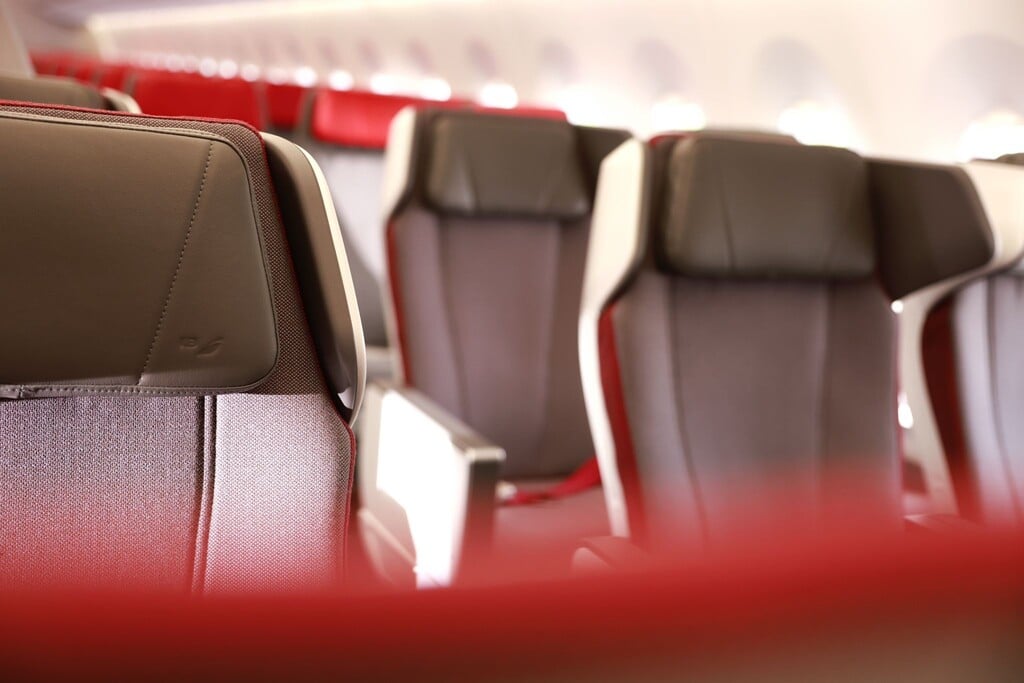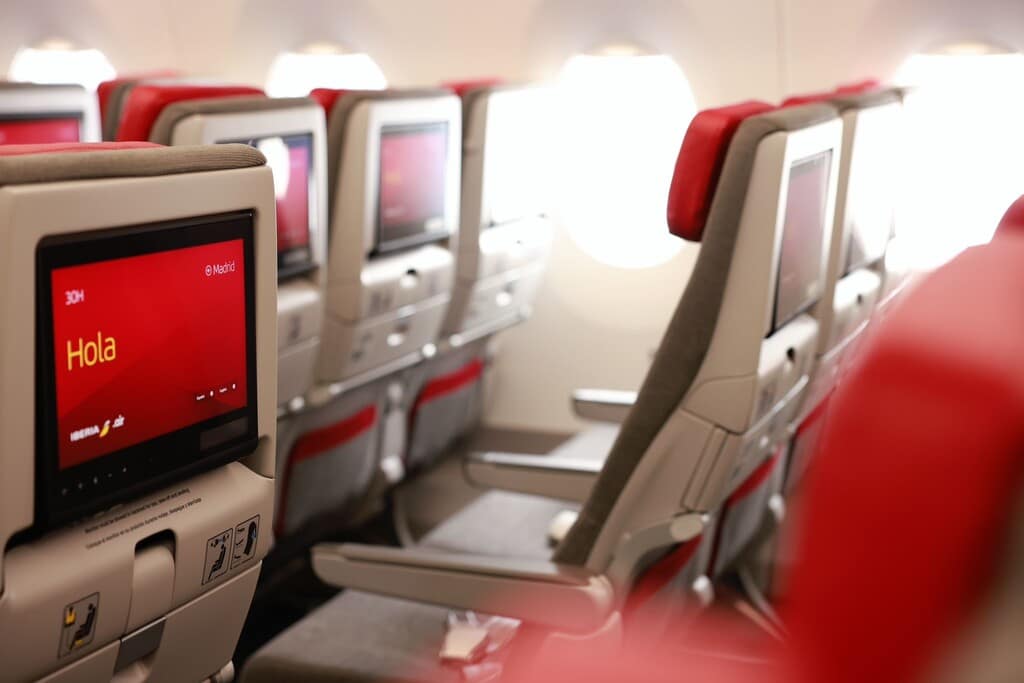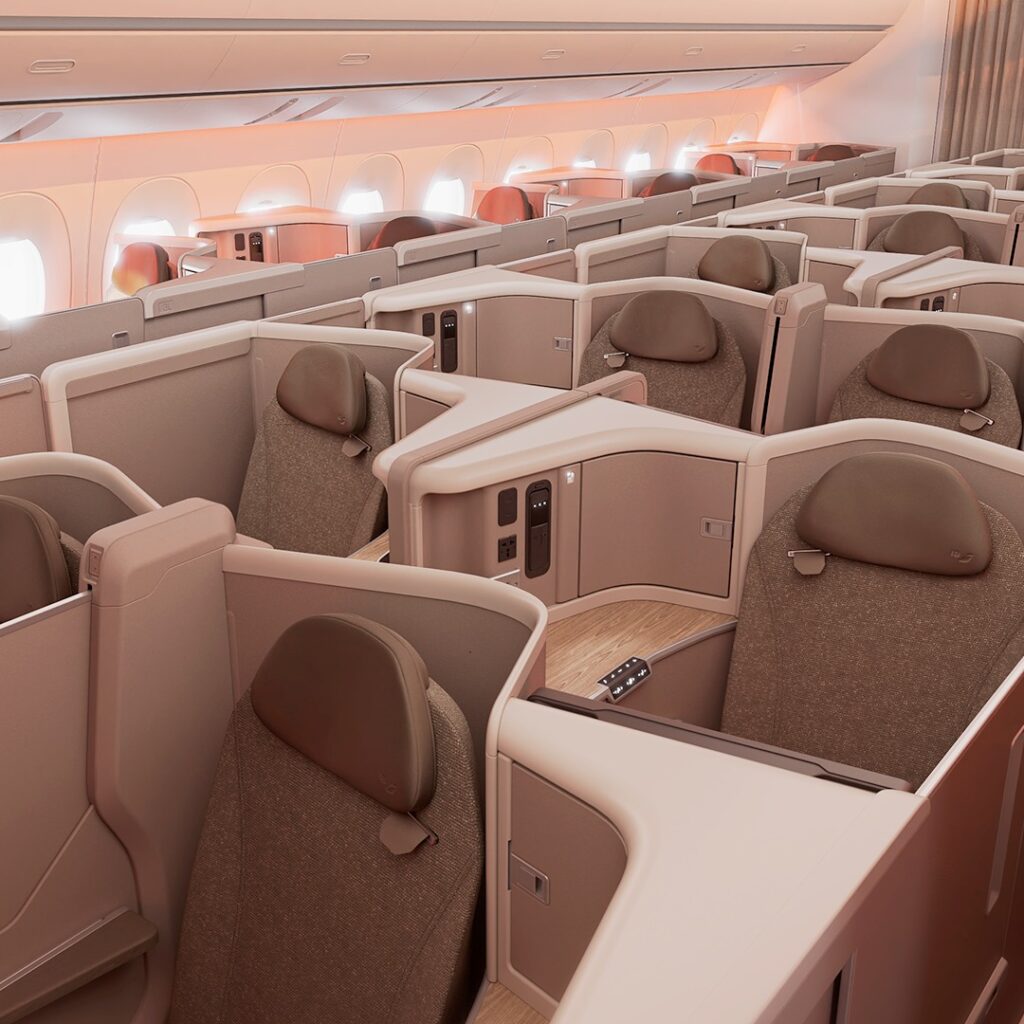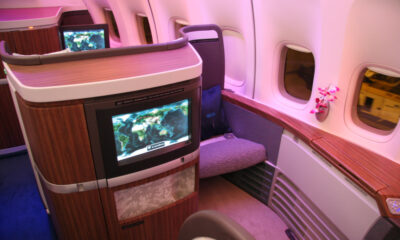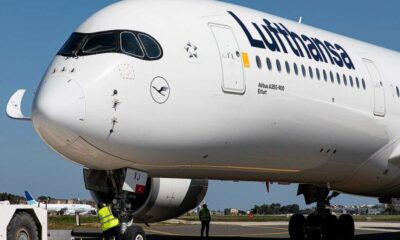Airlines
Iberia unveils the new Lavish cabin interior for its A350
This new-generation aircraft, equipped with the latest technology and designed to fly with maximum efficiency, is built with the most sustainable materials on the market and in this new standard
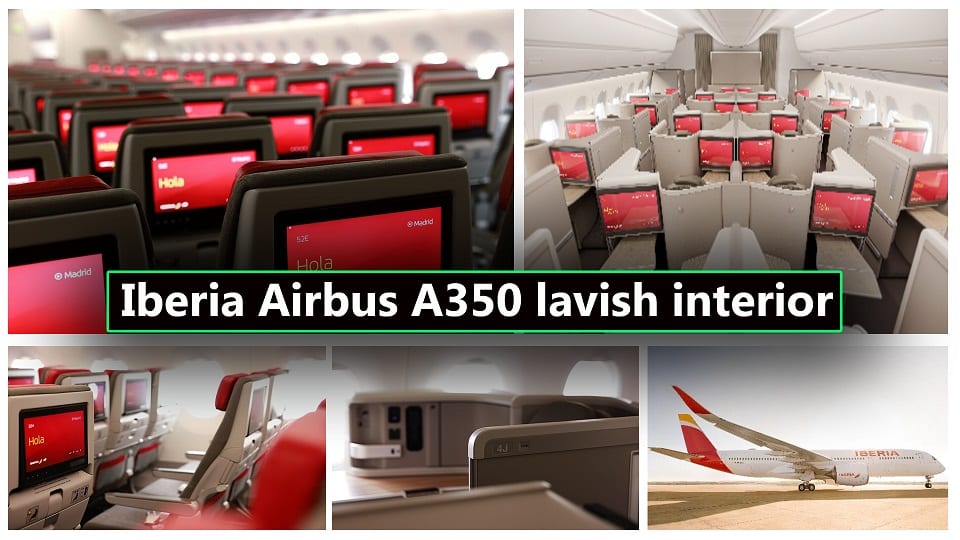
- Iberia is the first airline to take delivery of Airbus aircraft with this new standard, with a reduction in weight and low-speed operational improvements.
- The new Iberia A350s incorporate a new Business class seat with doors to give greater privacy to each customer, the seat when in flatbed mode is five centimetres longer than the previous ones.
- Premium Economy Class provides added privacy thanks to the improvement of the headrests in the seat.
- And the seats in the new Economy cabin are one centimetre wider and incorporate new storage for personal items.
- The new IFE NEXT in-flight entertainment system boasts the latest Panasonic technology, a more modern, interactive, and intuitive design, 4K resolution, larger screens in Premium Economy and Economy and Bluetooth pairing is available at every seat.
- The A350 Next has six different lighting environments to adapt the light to each moment of the flight. The bathroom surfaces are made from antibacterial materials, with contactless taps to provide greater hygiene.
Iberia has once more been the first airline to receive an A350 that meets a new Airbus standard, specifically the 4, 2022 standard, which includes upgrades that boost operational effectiveness and passenger comfort with bigger cabins.
This new-generation aircraft, equipped with the latest technology and designed to fly with maximum efficiency, is built with the most sustainable materials on the market and in this new standard, the weight has also been reduced by one ton.
Specifically, the new Iberia A350 boasts new flap positions that allow the pilot to select the optimal configuration for each takeoff; and the retraction of the landing gear is faster, which allows the airplane to reach a configuration that presents less aerodynamic resistance faster.
In addition to this, the weight of the empty aircraft in the factory has been reduced through structural improvements and lighter equipment, which increases its efficiency and also contributes significantly to improving its performance at the  most demanding airports from an operational point of view, known colloquially as hot & high.
most demanding airports from an operational point of view, known colloquially as hot & high.
The incorporation of this new generation A350 aircraft means a new product and optimised travel experience for the passengers with a wider cabin, greater comfort and better features in all cabins -Economy, Economy Premium and Business.
Business Class
A new door provides a more private and exclusive personal space for each customer. All seats in this cabin have direct access to the aisle and in the central ones -known as honeymoon seats- there is an automatic divider. The seat, which has articulated leather headrests and more storage for personal items, converts to a fully flat bed, which is 5 cm longer than the current seat. The number of each seat is projected on the aisle floor, to make them easier to find in the dark.
Premium Economy
This class also now offers more privacy, thanks the addition of ‘wings’ to the headrest, which folds and adjusts on both sides for greater customer comfort, as a novelty, the seat includes a remote control for in-flight entertainment with a touchable navigation panel.
Economy Class
The cabin of the new Airbus A350 is wider at armrest level, which Iberia has taken advantage of (maintaining the number of seats per row) to increase the width per seat by one centimetre and improve the comfort for it’s customers. In addition, the headrests are articulated, folding, and adjustable on both sides, as in the Premium Economy cabin. Below the in-flight entertainment screen, the seats incorporate a stand to hold and charge personal electronic devices.
IFE Next on Bigger Screens
The other qualitative leap of these planes comes from a new generation in-flight entertainment system that Iberia developed in collaboration with Panasonic, known as IFE Next.
It incorporates a more modern, interactive, and intuitive design. Its platform uses the most advanced technological system in the industry, and the screens offer 4K resolution that protects users’ eyes and incorporate night lighting to avoid disturbing nearby customers.
Cosier Atmosphere
This new generation of A350 has six different lighting environments -wake up, meal, relax, sleep, boarding, take-off and landing-, which provide the appropriate ambient lighting for each moment of the trip in all cabins.
The bathrooms feature contactless taps and surfaces made with antibacterial materials that improve hygiene.
Take a virtual visit of the cabin here: https://iberia.3dseatmapvr.com/examples/a350next.html

Airlines
A software error caused grounding the entire airline fleet

On Wednesday, the U.S. Federal Aviation Administration (FAA) issued a ground stop advisory for all Alaska Airlines and subcarrier flights due to a software issue, disrupting travel plans for passengers.
The FAA directive, which prohibited the departure of Alaska Airlines mainline and subcarrier flights, was implemented as a precautionary measure following the detection of the software problem. The ground stop was initiated after Alaska Airlines encountered difficulties during a system upgrade related to the calculation of weight and balance for their flights.
As a result, the airline opted for a temporary suspension of all its operations to address the issue and ensure passenger safety. Alaska Airlines promptly issued a statement acknowledging the incident and expressing their commitment to resolving the matter swiftly. “This morning we experienced an issue while performing an upgrade to the system that calculates our weight and balance.
Out of an abundance of caution, we requested a ground stop for all Alaska and Horizon flights, which was instituted at approximately 7:30 a.m. PT,” the statement read. Passengers affected by the disruption voiced their concerns on social media platforms, prompting Alaska Airlines to reassure them of their efforts to minimize the inconvenience and expedite the resumption of flights.
Following approximately an hour-long interruption, the FAA lifted the ground stop order, allowing Alaska Airlines and its subcarriers to resume normal operations. However, it was clarified that SkyWest, which provides regional service for Alaska Airlines and other carriers, was exempt from the ground stop and continued its flights unaffected.
Aerospace
Which is bigger 777x or 787 aircraft ?

The 777X is a new series of the Boeing 777 family and is designed to be larger and more efficient than its predecessor. It features two variants: the 777-8 and the 777-9, being the larger of the two.
The Boeing 777X emerges as the larger sibling within the Boeing family, representing a significant leap forward in both size and efficiency. Comprising two variants, the 777-8 and the 777-9, the latter takes the crown as the larger of the two. With its expansive fuselage and impressive wingspan, the 777X is tailored for long-range journeys and boasts a substantial passenger capacity.
On the other hand, the Boeing 787, affectionately known as the Dreamliner, occupies a niche in the market as a smaller yet formidable aircraft designed for medium to long-range flights. Its distinguishing feature lies in its composite fuselage, a technological marvel that renders it lighter and more fuel-efficient compared to conventional aluminum counterparts. The Boeing 777X is larger than the Boeing 787 aircraft.
When it comes to passenger capacity, the 777-9 reigns supreme, typically accommodating a sizeable contingent of 400-425 passengers in its standard configuration. In contrast, the 787, with its more modest dimensions, typically carries between 240-290 passengers, depending on the variant and layout.
One of the remarkable innovations introduced with the 777X is its folding wingtips, a feature designed to address the logistical challenges of accommodating such a large aircraft in conventional airport gates. These folding wingtips enable the 777X to retract its wings, allowing it to fit into gates designed for smaller aircraft while still reaping the benefits of an extended wingspan during flight, thereby enhancing fuel efficiency and operational flexibility
Airlines
Why Don’t Airplanes Fly Over the Pacific Ocean?

Flights do indeed fly over the Pacific Ocean, but the routes they take are often determined by factors such as airline policies, air traffic control decisions, and weather conditions. The Pacific Ocean is one of the largest bodies of water on Earth, and it’s regularly crossed by numerous flights traveling between North America, Asia, Australia, and other destinations.
However, some specific routes might avoid flying directly over certain parts of the Pacific Ocean for various reasons. For example:
- Safety and emergency considerations: While modern aircraft are equipped with advanced safety features, airlines, and pilots may prefer routes that keep them closer to potential diversion airports or within range of search and rescue facilities in case of emergencies.
- Air traffic control restrictions: Airspace management authorities may impose certain restrictions or preferred routes for managing air traffic efficiently. These restrictions could be based on factors such as military operations, airspace congestion, or diplomatic considerations.
- Weather conditions: Pilots and airlines consider weather patterns when planning routes. While the Pacific Ocean generally experiences fewer weather-related disruptions compared to other regions, factors like turbulence, thunderstorms, or tropical cyclones can influence route selection.
- Managing Cost Factors: In route planning, airlines have to take fuel prices, maintenance costs, crew charges, and other operating costs into account. Direct routes over the Pacific Ocean may be more cost-effective for shorter distances, but they may also necessitate extra safety precautions, including carrying more fuel for longer overwater operations.
- Remote Locations and Navigational Challenges: The Pacific Ocean’s vastness poses navigational issues, particularly for aircraft operating over isolated regions with few ground-based navigational aids. For precise positioning and route direction, pilots must mostly rely on satellite-based technology and onboard navigation systems, which may necessitate additional training and equipment purchases.
- Lack of Suitable Landing Options in the Pacific Ocean: Unlike regions with dense air traffic and numerous airports, the Pacific Ocean has vast stretches of open water with few suitable landing options in case of emergencies. While long-range aircraft are equipped with safety features like life rafts and emergency locator transmitters, the lack of nearby airports can increase the time it takes for rescue and recovery operations to reach distressed aircraft, posing additional risks to passengers and crew. Therefore, flight routes may be planned to ensure proximity to potential diversion airports or alternate landing sites in case of unforeseen circumstances.

